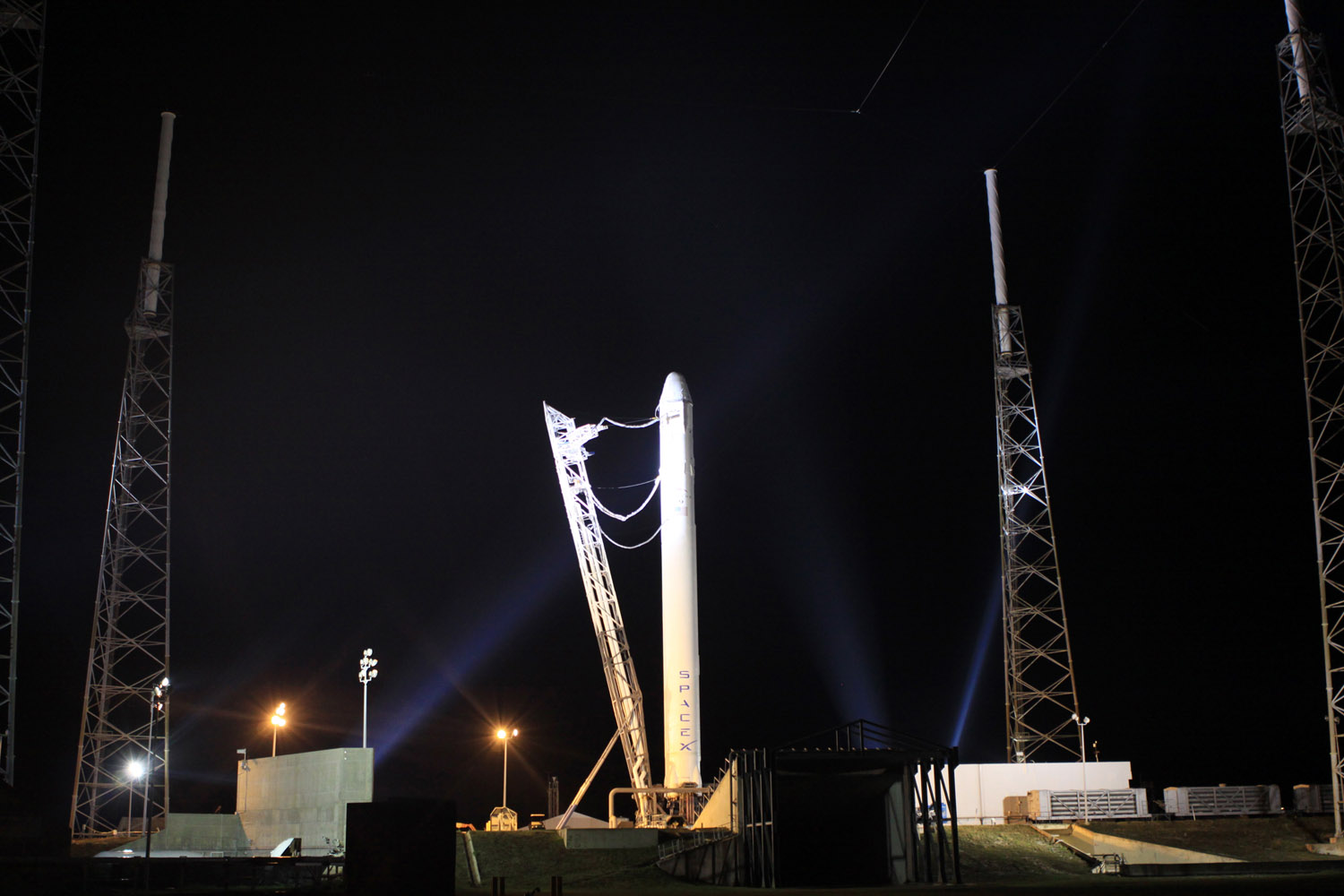SpaceX Fuels Private Rocket for Launch to Space Station

This story was updated on May 22 at 12:15 a.m. EDT.
CAPE CANAVERAL, Fla. — A privately built rocket carrying the first commercial spacecraft ever to visit the International Space Station has begun fueling for its planned early-morning launch into orbit on Tuesday (May 22).
The Falcon 9 rocket built by the commercial spaceflight company SpaceX is making its second attempt to launch the company's robotic Dragon space capsule, with blastoff set for 3:44 a.m. EDT (0744 GMT) from the Cape Canaveral Air Force Station here. The Falcon 9 booster is now being filled with liquid oxygen and kerosene fuel to power its nine engines.
"Fueling has begun," NASA spokesman Mike Curie told SPACE.com. "There are no constraints, and weather looks good."
Weather forecasts predict an optimistic 80 percent chance of clear skies for this second try at launch. [Quiz: How Well Do You Know SpaceX's Dragon?]
The unmanned spacecraft was due to make its maiden trip to the International Space Station Saturday (May 19), but a rocket engine glitch forced a launch abort in the last half-second. Over the weekend, SpaceX engineers discovered a faulty check valve was to blame for the abnormally high chamber pressure in the engine that caused the abort.
"Since then they replaced that check valve with a new unit and have tested all the other engines for similar problems and believe they are good to go," Mike Horkachuck, NASA project executive for the Hawthorne, Calif.-based SpaceX, said Monday.
Get the Space.com Newsletter
Breaking space news, the latest updates on rocket launches, skywatching events and more!
"Space Exploration Technologies (SpaceX) will attempt to launch a Falcon 9 rocket carrying a Dragon spacecraft to orbit in an exciting start to the mission that will make SpaceX the first commercial company in history to try to send a spacecraft to the International Space Station," company officials said in a statement Monday.
For this debut mission, the Dragon spacecraft is packed 1,200 pounds of cargo, including 162 meals for the station crew, science experiments designed by middle and high school students, and a supply of commemorative mission patches and pins.
If Dragon lifts off Tuesday, it is expected to approach the space station on Thursday (May 24), and then be attached to the orbiting lab on Friday.
The space capsule, while robotic, is not able to dock itself at the International Space Station. Instead, the spacecraft will pull up close to the station so that astronauts inside the orbiting lab can use a robotic arm to latch onto the vehicle and attach it to an available docking port.
After several weeks linked to the space station, the Dragon capsule is expected to depart the outpost and splash down in the Pacific Ocean a few hundred miles west of the Southern California coast. A recovery ship will retrieve the capsule from the ocean.
You can follow SPACE.com assistant managing editor Clara Moskowitz on Twitter @ClaraMoskowitz. Follow SPACE.com for the latest in space science and exploration news on Twitter @Spacedotcomand on Facebook.
Join our Space Forums to keep talking space on the latest missions, night sky and more! And if you have a news tip, correction or comment, let us know at: community@space.com.

Clara Moskowitz is a science and space writer who joined the Space.com team in 2008 and served as Assistant Managing Editor from 2011 to 2013. Clara has a bachelor's degree in astronomy and physics from Wesleyan University, and a graduate certificate in science writing from the University of California, Santa Cruz. She covers everything from astronomy to human spaceflight and once aced a NASTAR suborbital spaceflight training program for space missions. Clara is currently Associate Editor of Scientific American. To see her latest project is, follow Clara on Twitter.









